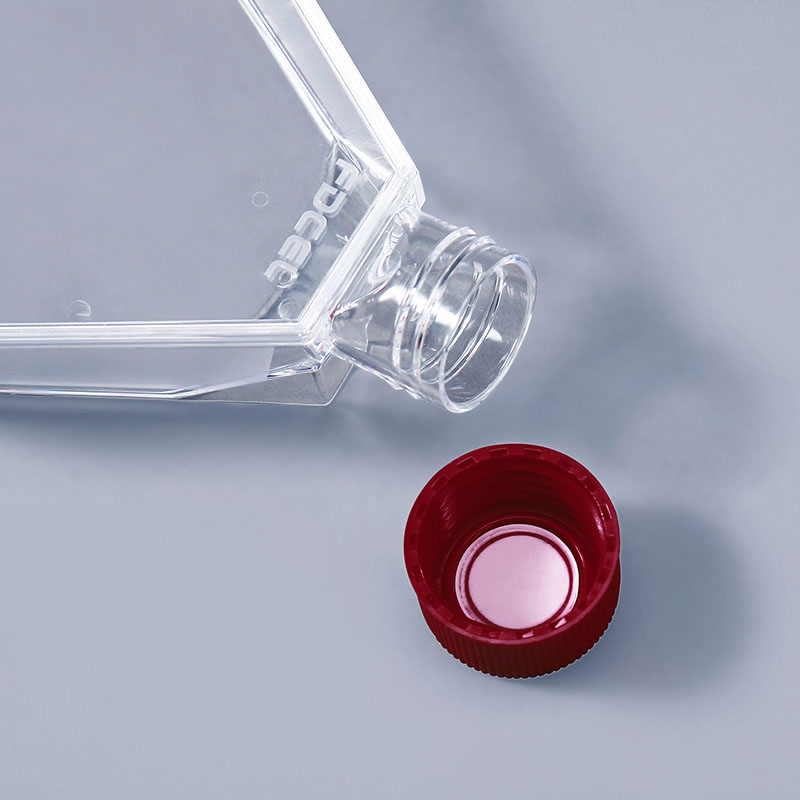Cell culture flasks are essential tools in cell biology experiments and tissue culture. They provide a suitable environment for cells to grow and multiply. In this article, we will delve into the two main types of cell culture flasks - hydrophilic and hydrophobic flasks - to help laboratory personnel better choose the right flasks to optimize cell culture results.
1. Overview of Cell Culture Flasks
Cell culture flasks are generally made of medical grade polystyrene (PS), which is highly transparent and easy to observe cell growth. Depending on the surface treatment process, they can be categorized into hydrophilic and hydrophobic types. These two types of flasks are suitable for different types of cell culture respectively.
2. Hydrophilic cell culture flasks
2.1 Scope of application
Hydrophilic cell culture flasks are specialized for the culture of adherent cells. These cells need to be attached to a solid surface in order to grow and multiply properly. For example, many fibroblasts and tumor cell lines are adherent cells.
2.2 Surface Preparation
The surface of hydrophilic cell culture bottles is specially modified, usually by introducing hydrophilic groups (e.g., hydroxyl groups, amino groups, etc.). These hydrophilic groups enhance the wettability of the surface of the bottle and improve the wall-adherence properties of the cells, enabling the cells to attach effectively to the surface of the culture bottle.

3. Hydrophobic cell culture flasks
3.1 Scope of application
Hydrophobic cell culture flasks are mainly used for the culture of suspended cells. These cells grow in suspension in the culture medium and do not need to be attached to a solid surface. Typical suspension cells include lymphocytes and certain tumor cell lines.
3.2 Material Properties
Hydrophobic culture bottles are typically made of polystyrene that has not been hydrophilically treated. The structure of polystyrene consists of saturated carbon chains and conjugated benzene rings, which makes the polystyrene molecule irregular and highly rigid, thus imparting its natural hydrophobicity. Therefore, these flasks do not require additional surface treatment and can be used for suspension cell culture.
4. Selection of suitable culture flasks
Choosing the right cell culture flask is critical to the success of the experiment. For adherent cells, hydrophilic culture flasks provide an ideal attachment surface that facilitates cell growth and division. For suspended cells, hydrophobic culture flasks can fulfill the need for cells to be suspended in the culture medium, avoiding the problem of cell attachment.
As the basic tool for cell culture, the different design and material of cell culture flasks directly affect the cell growth environment and experimental results. Understanding the characteristics of hydrophilic and hydrophobic culture flasks as well as their scope of application can help laboratory personnel choose culture flasks more accurately, thus optimizing the results of cell culture and the success of experiments. By choosing the right cell culture flasks, lab personnel can provide optimal growth environments for different types of cells, improving the accuracy and efficiency of experiments. This not only contributes to the depth of scientific research, but also provides a solid foundation for applications in related fields.
The FAI climbed 5.9 percent year-on-year in the first 11 months of 2018, quickening from the 5.7-percent growth in Jan-Oct, the National Bureau of Statistics (NBS) said Friday in an online statement.
The key indicator of investment, dubbed a major growth driver, hit the bottom in August and has since started to rebound steadily.
In the face of emerging economic challenges home and abroad, China has stepped up efforts to stabilize investment, in particular rolling out measures to motivate private investors and channel funds into infrastructure.
Friday's data showed private investment, accounting for more than 60 percent of the total FAI, expanded by a brisk 8.7 percent.
NBS spokesperson Mao Shengyong said funds into weak economic links registered rapid increases as investment in environmental protection and agriculture jumped 42 percent and 12.5 percent respectively, much faster than the average.
In breakdown, investment in high-tech and equipment manufacturing remained vigorous with 16.1-percent and 11.6-percent increases respectively in the first 11 months. Infrastructure investment gained 3.7 percent, staying flat. Investment in property development rose 9.7 percent, also unchanged.
 English
English


















































